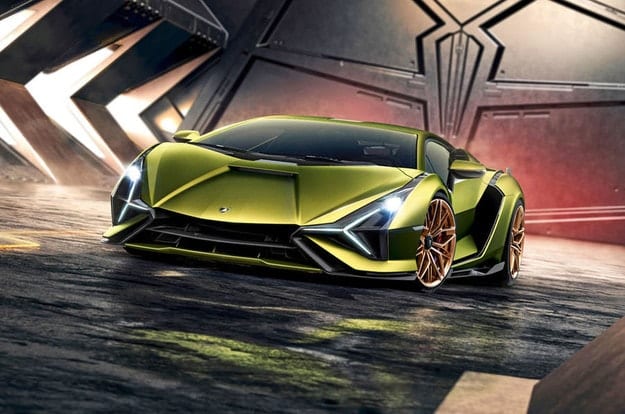
Lamborghini focused on early hybrids
Content
Energy storage is a leading innovation, for the first time in the upcoming Sián
The first mass-produced Lamborghini hybrid models feature innovative electrical technology. The supercar company focuses on lightweight supercapacitors and the ability to use a carbon fiber casing to store electricity.
The Italian manufacturer is collaborating with the Massachusetts Institute of Technology (MIT) in a number of research projects on supercapacitor batteries that can charge faster and store more energy than lithium-ion batteries of a similar size, and how to store energy in new materials.
Ricardo Bettini, Lamborghini's R&D project manager, says that while it's clear electricity is the future, the current weight requirements for lithium-ion batteries mean "it's not the best solution at the moment" for companies. He adds: “Lamborghini has always been about lightness, performance, fun and dedication. We need to keep this in our super sports cars going forward. “
The technology was visualized on the Terzo Millennio concept car, shown in 2017, and a small supercapacitor will be introduced on the upcoming limited model. Sián FKP 37 with 808 hp The model is equipped with the company's 6,5-liter V12 engine with a 48V electronic engine integrated in the gearbox and driven by a supercapacitor. The electric motor produces 34 hp and weighs 34 kg, and Lamborghini claims to charge three times faster than an equivalent size lithium-ion battery.
Although the Sián supercapacitor used is relatively small, Lamborghini and MIT continue their research. Recently, they received a patent for a new synthetic material that could be used as a “technological base” for a more powerful next-generation supercapacitor.
Bettini says the technology remains “at least two to three years old” from production, but supercapacitors are Lamborghini’s “first step towards electricity”.
The MIT research project is exploring how to use carbon fiber surfaces filled with synthetic materials to store energy.
Bettini says: “If we can capture and use energy much faster, the car could become lighter. We could also store energy in the body by using the car as a battery, which means we can save weight. “
Although Lamborghini is keen to introduce hybrid models in the coming years, Bettini says they are still working towards the goal of 2030 to develop their first all-electric car, as the manufacturer explores how to "save DNA." and the emotions of Lamborghini. "
Meanwhile, it has become known that the brand is considering creating its fourth lineup, which will be a big four-seater tour by 2025, all-electric. In addition, it will likely show a conventional hybrid version of the Lamborghini Urus using the powertrain provided by its sister Porsche Cayenne.
Lambo wants electric cars to sound right
Lamborghini is conducting research to develop sound for its electric vehicles that will provide maximum driver attention. The company has long believed that the sound of V10 and V12 engines is the key to their appeal.
“We checked with professional pilots in our simulator and turned off the sound,” said Lamborghini R&D chief Ricardo Bettini. “We know from neurological signals that when we stop a sound, interest drops because the feedback disappears. We need to find a Lamborghini sound for the future that will keep our cars moving and active. "